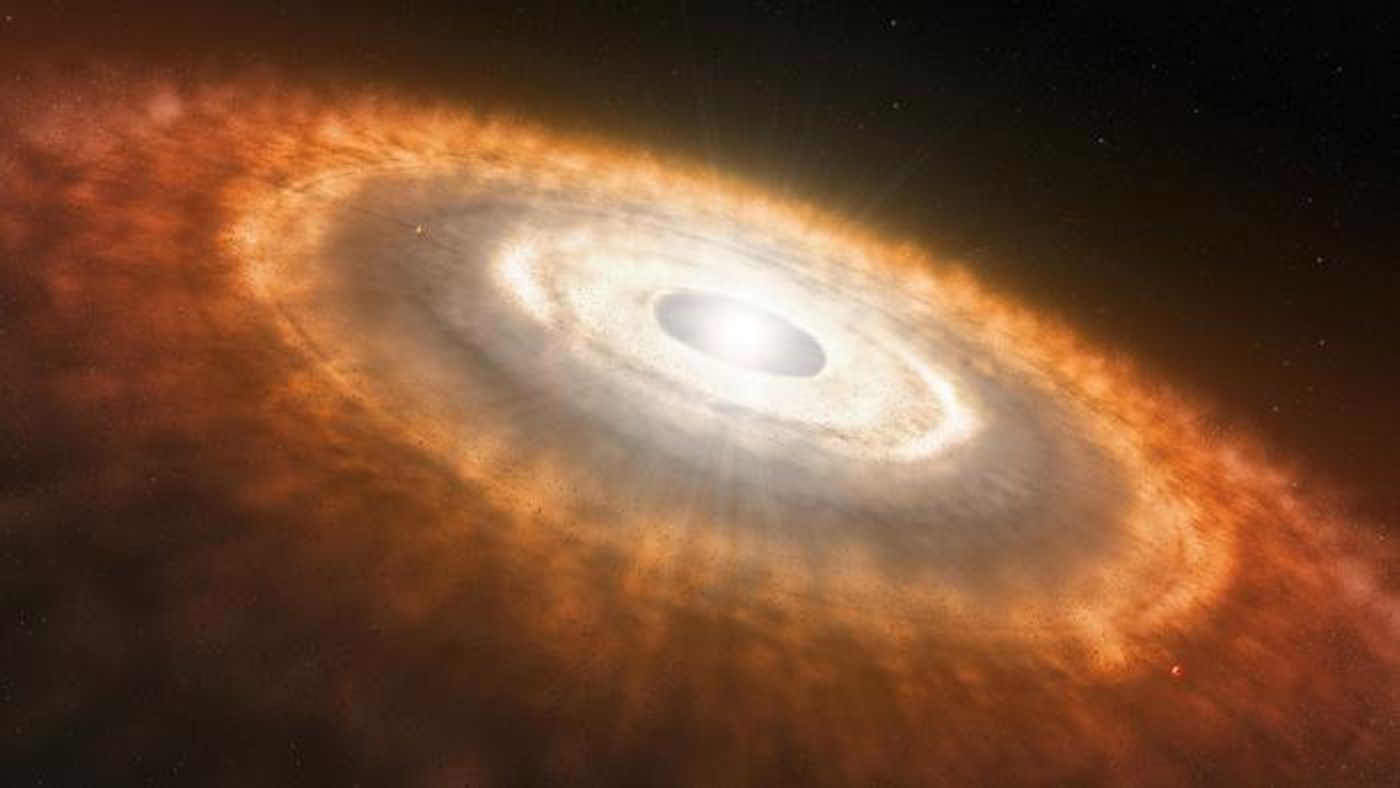Unlocking the Secrets of Planet Formation: First Observations with the James Webb Space Telescope
Can planets form under extreme conditions, such as high levels of ultraviolet radiation? This is something a recent study published in The Astrophysical Journal Letters hopes to find out as a team of international researchers used data obtained from NASA’s James Webb Space Telescope (JWST) as part of the eXtreme Ultraviolet Environments (XUE) JWST program to study the formation and evolution of young planetary systems. This particular study, known as XUE 1, focuses on the star cluster Pismis 24, with the team identifying some key ingredients for life as we know it.
Artist rendition of a protoplanetary disk where planets are forming around a young star. (Credit: ESO/L. Calçada)
“We find that the inner disk around XUE 1 is remarkably similar to those in nearby star-forming regions,” said Dr. Rens Waters, who is a professor of astrophysics at Radboud University in the Netherlands and a co-author on the study. “We’ve detected water and other molecules like carbon monoxide, carbon dioxide, hydrogen cyanide, and acetylene. However, the emission found was weaker than some models predicted. This might imply a small outer disk radius.”
The goal of XUE is to analyze 15 protoplanetary disks within NGC 6357, also known as the Lobster Nebula, and is located approximately 5,500 light-years from Earth.
For the study, the team used JWST’s Medium Resolution Spectrometer (MRS) attached to the Mid-Infrared Instrument (MIRI) and combined this with sophisticated computer software to not only discover the existence of water and other molecules within the disk but also that the material in the inner regions of the disk match those of other protoplanetary systems, specifically pertaining to the formation of rocky planets. Despite this particular system being bombarded with ultraviolet radiation, the team is hopeful this allows rocky planets to form under a myriad of conditions outside of what we’ve seen in our own solar system.
Data from NASA’s JWST identified water and other molecules necessary for life as we know it within the protoplanetary disk. (Credit: NASA, ESA, CSA, M. Ramírez-Tannus (Max Planck Institute for Astronomy), J. Olmsted (STScI))
“XUE 1 shows us that the conditions to form rocky planets are there, so the next step is to check how common that is,” said Dr. María Claudia Ramírez-Tannus, who is a postdoctoral researcher at the Max Planck Institute for Astronomy and lead author of the study. “We will observe other disks in the same region to determine the frequency with which these conditions can be observed.”
What new discoveries will astronomers make about protoplanetary disks in extreme environments in the coming years and decades? Only time will tell, and this is why we science!
As always, keep doing science & keep looking up!
Sources: The Astrophysical Journal Letters, EurekAlert!, NASA, NASA (1), Wikipedia, Space Telescope Science Institute










